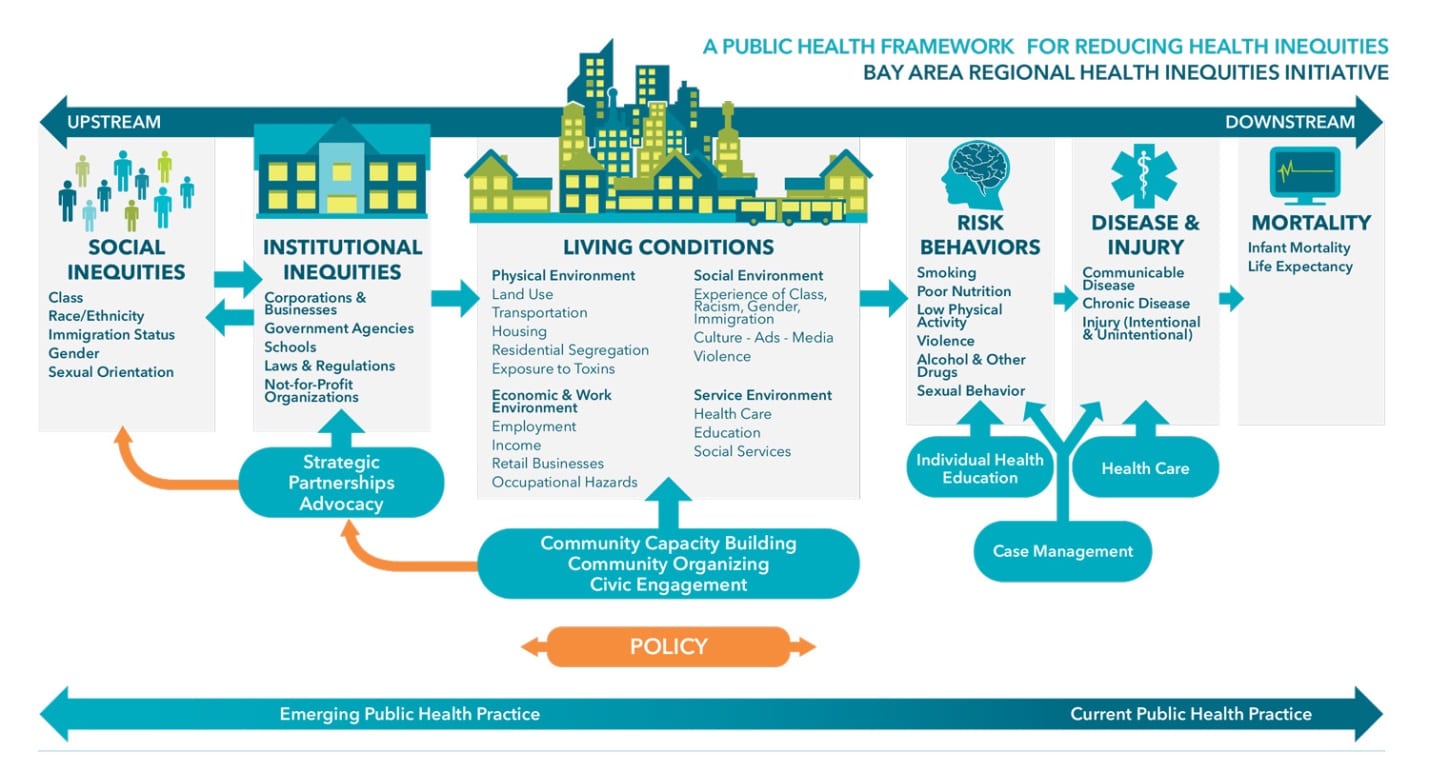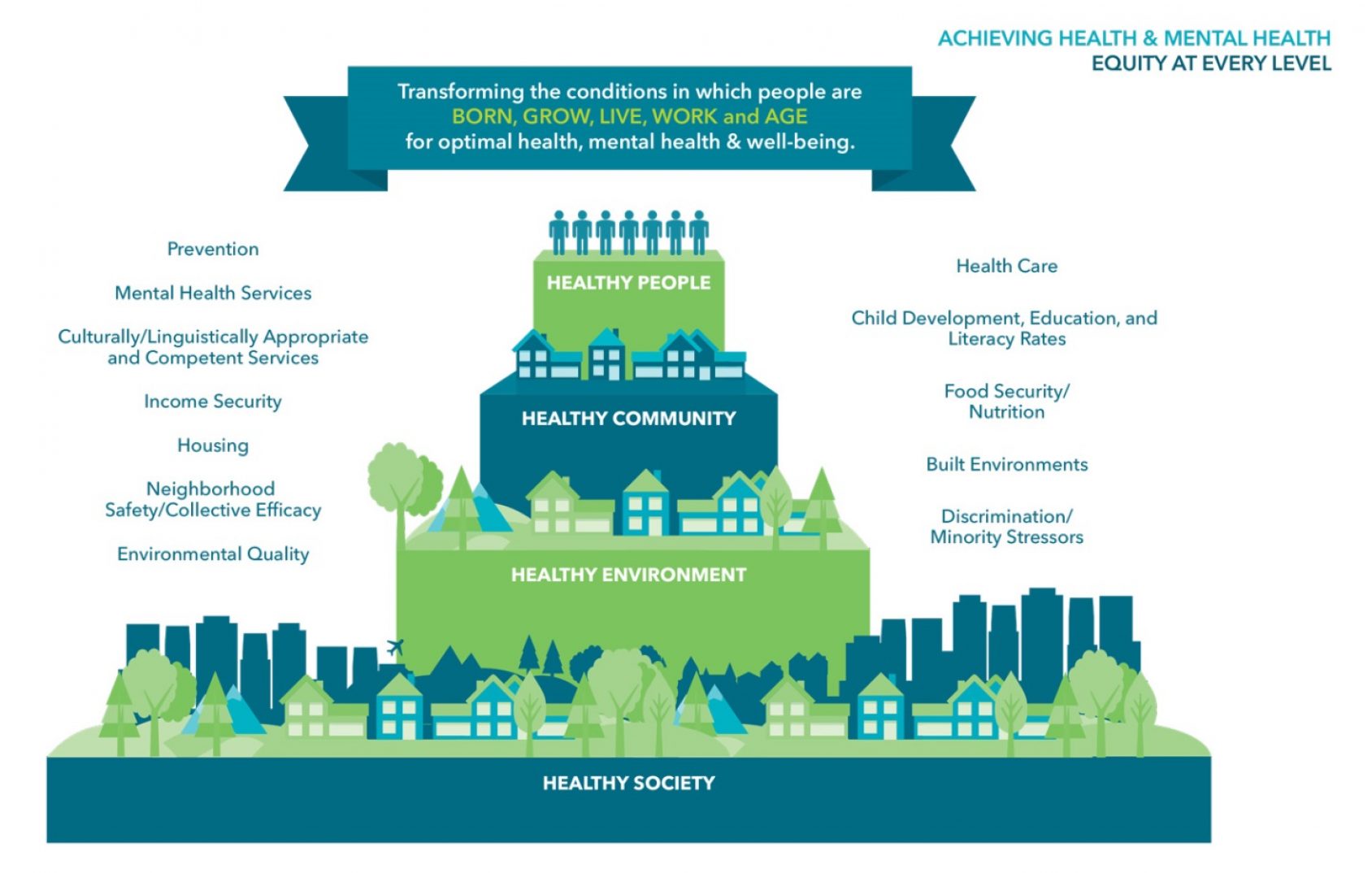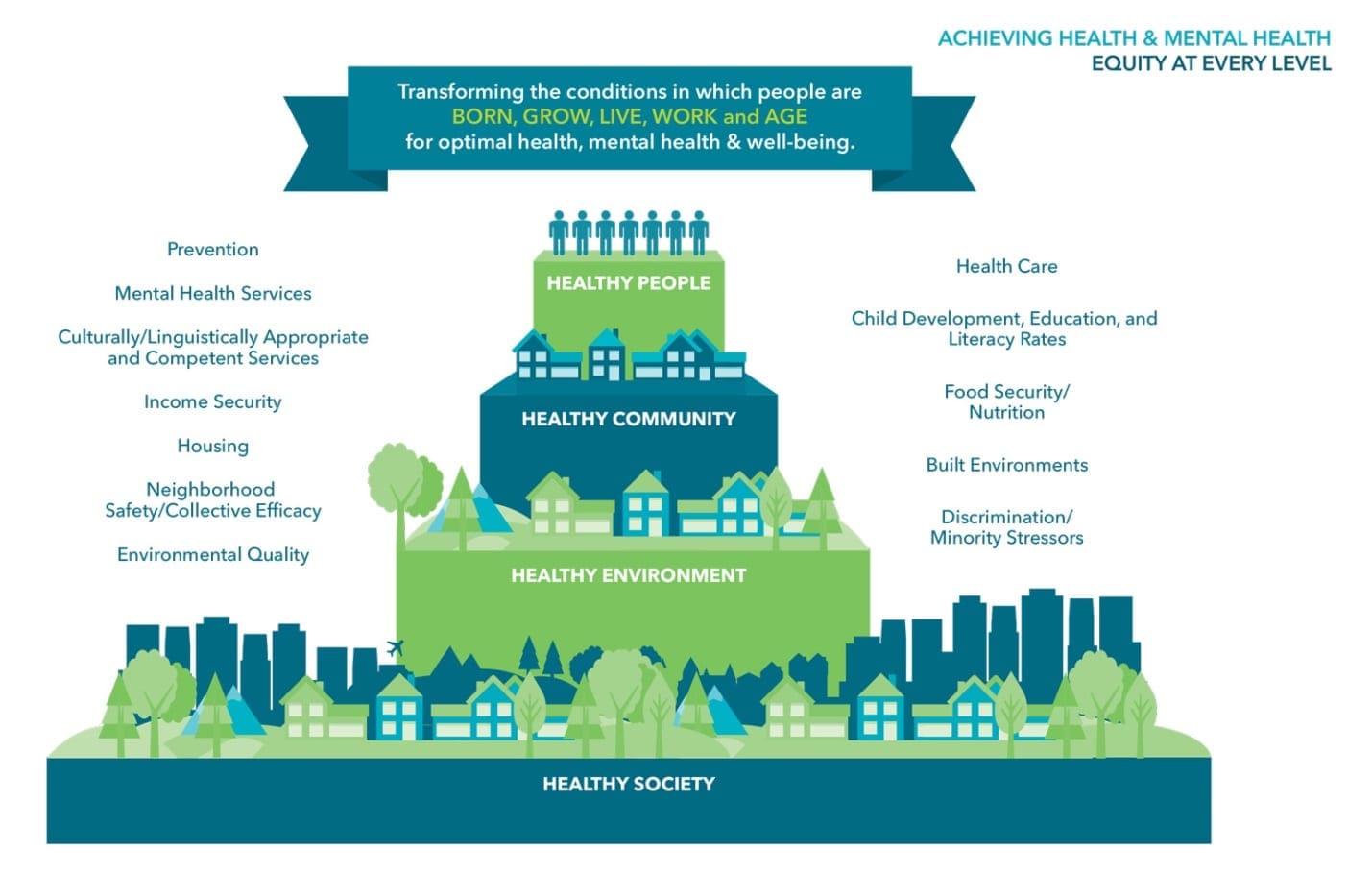What Are Social Determinants of Health?
The social determinants of health are the conditions in which we live, learn, work, and play.1 These conditions include a broad range of socioeconomic and environmental factors, such as air and water quality, the quality of the built environment (e.g., housing quality; land use; transportation access and availability; street, park, and playground safety; workplace safety; etc.), opportunities for employment, income, early childhood development and education, access to healthy foods, health insurance coverage and access to health care services, safety from crime and violence, culturally and linguistically appropriate services in all sectors, protection against institutionalized forms of racism and discrimination, and public and private policies and programs that prioritize individual and community health in all actions.2
When a society’s principles and policies work to improve these social determinants of health to promote justice and equity for everyone, health is created at the levels of the individual, the community, the environment, and society at large.2 When any combination of these conditions is lacking, the engine that powers total health can break down, resulting in significant health inequities and disparities in health outcomes.2
These environmental, social, and economic factors powerfully influence health outcomes for entire populations.2 Many people assume that health is mostly a function of individuals’ seeing the doctor regularly for good medical care, however it is estimated that medical care, healthy behaviors, and genes and biology altogether account for only about half of a society’s overall health outcomes.2 The other half is made up of those social determinants of health that provide or limit the opportunities for health.2
The Bay Area Regional Health Inequities Initiative (BARHII) model, pictured below, shows how factors impacting health can be presented through an upstream/downstream model – with upstream inequities that can create unequal living conditions. These unequal conditions then shape how we can approach our health behaviors, which lead to disparities downstream in disease, injury, and mortality.2

Figure 1: A Public Health Framework for Reducing Health Inequities – Bay Area Regional Health Inequities Initiative3
Research shows some individuals die 20 years earlier than others who live just a few miles away because of differences in education, employment, housing, safety, community development, and access to quality health care.4 Addressing the social determinants of health can help promote a culture that empowers everyone to live the healthiest lives that they can, even when they are dealing with chronic illness or other constraints.4 This include developing a health care system that extends beyond the walls of medical offices, couples treatment with care, to consider the life needs of patients, families, and caregivers, inside and outside the clinic.4
Understanding what creates or limits the opportunity for health is essential to understanding what creates disparate health outcomes and what needs to be done to prevent them. Among other things, the solutions need to involve changes at the policy level by a broad set of public and private partners representing sectors that impact public health but may not have health at the center of their decision making, such as transportation, economic development, chambers of commerce, city planning, and others.
The social ecological model, shown in the graphic “Achieving Health and Mental Health Equity At Every Level”, presents how society, environment, communities and people can collectively transform the conditions in which people are born, grow, live, work, and age to promote optimal health, mental health, and wellbeing.
Check out these resources to learn more about social determinants of health:
Portrait of Promise: The California Statewide Plan to Promote Health and Mental Health Equity: The Office of Health Equity from the California Department of Public Health wrote up this report to highlight the differences in health status across different people groups in the state of California that must be addressed in order to improve the mental and physical health of our state’s residents.
Health in All Policies: A Guide for State and Local Governments: This guide was written by members of the California Health in All Policies Task Force for leaders in state and local government coordinating work across sectors (e.g. transportation, housing, criminal justice, energy, etc.) to improve health. The report also includes examples of implementation approaches based on activities underway in California.
Creating a Healthy Community: Check out this video for what it looks like to thrive in a flourishing, healthy community. What steps will we take to make this vision a reality in the state of California?5
Footnotes:
- World Health Organization. (August 2016). Social determinants of health. https://www.who.int/social_determinants/en/
- Office of Health Equity. (August 2016). Portrait of Promise: California Statewide Plan to Promote Health Equity and Mental Health Equity. California Department of Public Health. https://www.cdph.ca.gov/programs/Documents/CDPHOHEDisparityReportAug2015.pdf
- A Public Health Framework for Reducing Health Inequities [Chart]. (2015). In BARHII. Retrieved August, 2016, from https://barhii.org/framework/
- Lavizzo-Mourey, R. (2014). 2014 President’s Message. Retrieved August, 2016, from https://www.rwjf.org/en/library/annual-reports/presidents-message-2014.html
- ChangeLab Solutions (Director). (2016, April 5). Collaborative Health – Health in All Policies [Video file]. In YouTube. Retrieved August 24, 2016, from https://www.youtube.com/watch?v=jv3JzWdivLo


